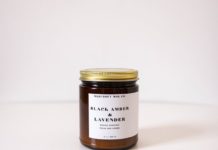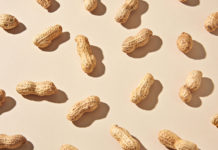
5 Best Foods For Strong Bones and Joints
Strong bones and flexible joints are essential at any age, but they’re especially crucial as we get older, and that doesn’t mean past retirement, either — bone density formation peaks at about age 25, then stays steady for a few decades before bone loss accelerates.
AGE-RELATED ISSUES
Aging does a bit of a number on your joints as well, because time causes the lubricating fluid inside your joints to decrease, just as cartilage becomes thinner and ligaments get shorter, causing joints to feel less flexible and more likely to stiffen.
Is the march toward osteoporosis and osteoarthritis inevitable? Not at all. Although age-related changes are simply a part of life, there’s a great deal we can do to slow them, particularly through exercise and food choices.
THE PRICE OF INACTIVITY
There are also lifestyle factors that can speed up this process, unfortunately. Inactivity is a huge one — being sedentary can have a significant effect on both bone density and joint health, especially because lack of exercise can cause weight gain. Other bone-and-joint killers are cigarette smoking, alcohol abuse, long-term use of some medications like glucocorticoids, and low consumption of calcium, vitamin D, potassium and protein.
To counteract these, exercise is a top strategy, but it’s also helpful to incorporate foods that can give you those vitamins and minerals, as well as protein, and lower inflammation at the same time. Being sedentary and eating not-so-healthy foods can increase inflammation throughout the body, and cause harmful changes to your bones and joints.
Focusing on foods that lower inflammation and contain antioxidants can slow the rate of cartilage breakdown and bone loss. Consider these choices to keep yourself on track for staying strong and flexible:

Omega-3 fatty acids, present in some types of fish, can be helpful for lowering your levels of inflammation, according to the Arthritis Foundation. Kara Landau, RD, of the Traveling Dietician, recommends eating 3–6 ounces of fish weekly like salmon, herring, tuna and sardines. Even fish oil supplements may help, she says, because it can reduce the kind of joint swelling and pain that comes with inflammation.

Loading up on calcium, potassium and magnesium is essential for bone and joint health, but you don’t always have to hit the dairy to do it. Options like kale, spinach, chard, bok choy, mustard greens and collards are top sources of nutrition, according to the USDA.
They’re rich in health-supporting vitamins and also contain an abundance of carotenoids, a type of antioxidant that protects cells and lowers inflammation. The vitamin K in dark green leafy vegetables is particularly potent in preventing osteoporosis and easing inflammatory responses. The USDA recommends eating at least 2–3 servings of this vegetable type per week, although Landau suggests increasing that amount by quite a bit for even more benefit.

Research has noted berries — like strawberries, raspberries, blackberries, blueberries and cranberries — are some of the best dietary sources of antioxidants, which can be significant for bone and joint health.
Tart cherries are particularly helpful not only for their antioxidant levels, but also because they’ve been shown to assist with faster recovery from intense workouts and lower amounts of post-exertion muscle pain. So, as you’re increasing your exercise duration for stronger bones and more flexible joints, cherries can ease next-day soreness.

Olive oil contains a compound called oleocanthal, which has properties similar to anti-inflammatory medications used for arthritis. Oleocanthal prevents the production of certain enzymes that increase inflammation and, in turn, potential pain sensitivity. Landau suggests that to keep the healthful properties intact, you should choose dark-colored bottles and store them in a cool, dark place.

This bright-yellow spice is a great choice when it comes to supporting joint health, lowering inflammation and boosting the immune system. The golden color comes from beta-carotene, which helps turn off the inflammation-triggering process.
Plus, you don’t have to have curry every day to use it. Lisa Markey, RDN, co-author of “The Essential Thyroid Cookbook,” suggests making “golden milk” by combining ginger, turmeric and coconut or almond milk, and warming the blend before drinking. It makes a tasty creamer for your morning coffee or a nice anti-inflammation nightcap.





























